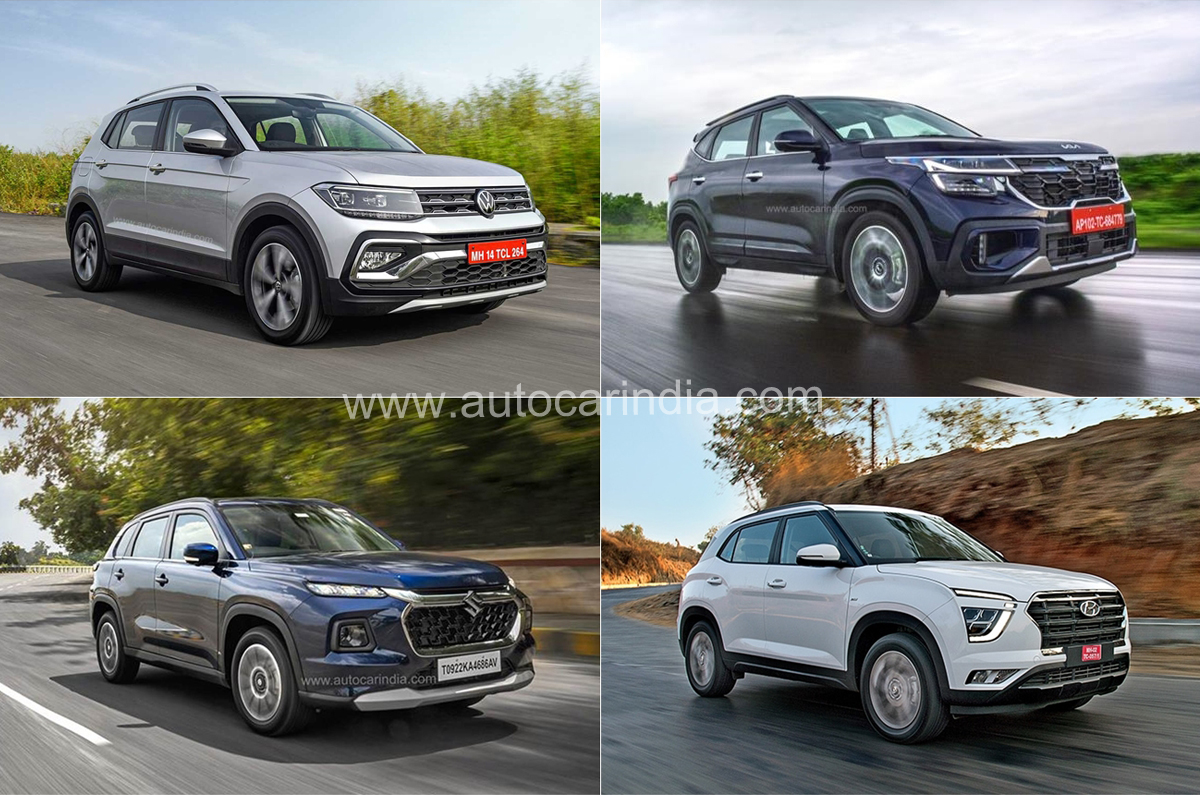As the sun sets, a large dark mass slips silently out of view. The cylindrical shape displaces water noiselessly as it submerges, the screw at the rear creates almost no churn, and, once the submarine pulls its periscope in and dives, it all but vanishes from the face of the earth. Totally invisible and near impossible to track, it slips through the water like a ghost.

Detection is made more difficult thanks to its shape; it’s designed to present the smallest cross section to anyone putting out an exploratory sonar ‘ping’. So serious are the designers about acoustic stealth, every single component on this submarine is insulated to prevent noise generation. You can’t kill what you can’t see; and here, the only way to ‘see’ is by using sound.

Hybrids you can charge
What goes almost unnoticed, however, is the submarine’s clever propulsion system. A diesel-electric submarine like the Kalvari Class is a very good example of the use of the right technology for the right application. In use since the late 1930s, the system is designed so that the diesel engines can do both, run the propeller and/or charge the batteries.
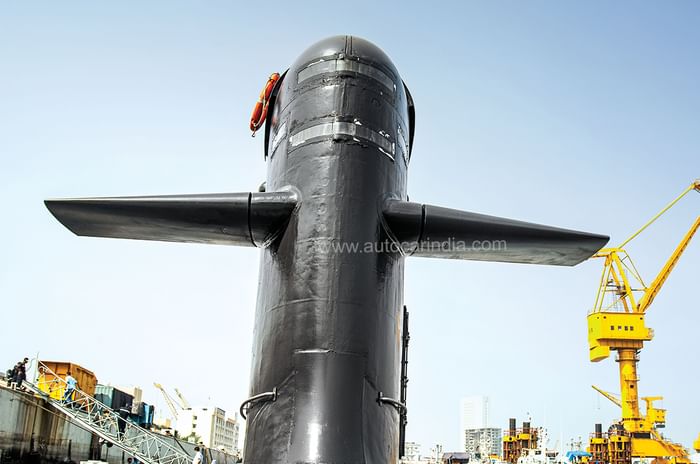
The diesel-electric submarine also, crucially, is a plug-in hybrid. Its batteries can be charged both by plugging in to a shore charger or by running the diesel engine out at sea. When it needs to charge, the boat rises to the surface, runs the diesel engine and charges the batteries. It can even charge the batteries while running just below the surface; all it has to do is put up a snorkel.
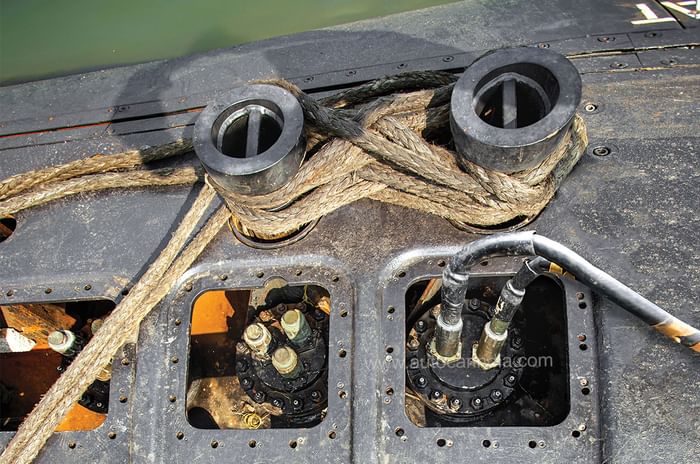
Porsche’s Cayenne plug-in hybrid is similar in many ways. For one, you also plug it into a wall socket and charge the battery. It isn’t a very large battery, and at 14.1kWh, it gives you a range of only around 30km. But this can be sufficient, especially if you only need to run electric for short city runs. Like the submarine, the 3.0-litre, V6 petrol engine also charges the Cayenne on the move. This happens when you get off the throttle and slow down, and also when the generator is spun by the engine to make electricity.
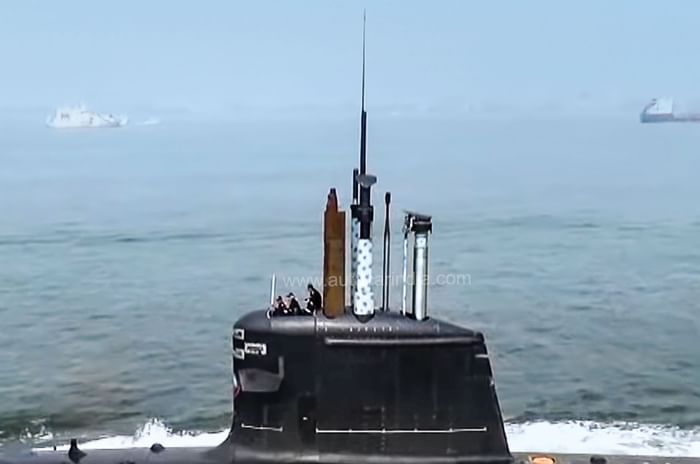
In addition, the Porsche also has unique drive modes called E-Hold and E-Charge, selectable via the system menu on the screen. E-Hold keeps the level of the battery constant by topping it up regularly, and E-Charge goes one step further by actively taking the battery to full by running the engine at a higher speed than needed.
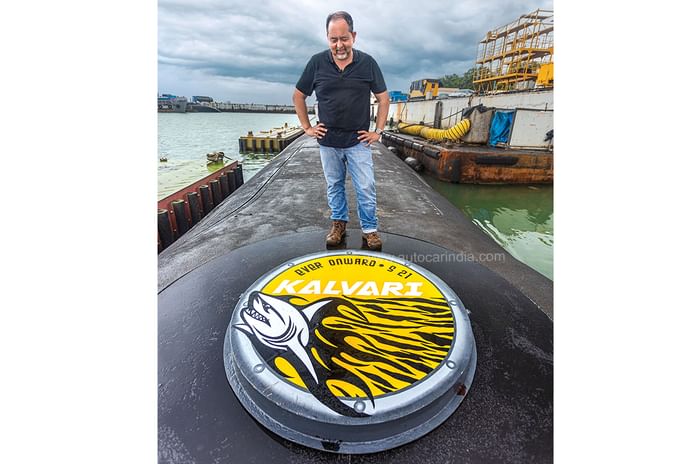
While the submarine runs this part-electric system for greater stealth, the Porsche uses it to help deliver greater economy. The Cayenne, however, is still seriously performance-oriented. 0-100kph comes up in just 4.8 seconds and with combined power, at 455hp, there’s plenty of oomph. Pure electric power stands at 134hp and the petrol engine makes 335hp. Also, should you want to launch off the line on electric power alone, you can; the system is called E-Launch. To aid efficiency, Porsche has even given the throttle pedal a pressure point or detent that you can feel as you accelerate. Go beyond this and the combustion engine starts up.
On the surface
Before we get into the various systems and sub-systems of the Kalvari class boat, let’s take a quick look at just what we can see above the surface. But first, some perspective. It is big and very heavy. Approximately 70 metres long from stem to stern, with the conning tower and periscopes stretching around 12 metres high, it’s a fair-sized ‘boat’. And with a displacement of around 1,600 tonnes, it’s heavy. How heavy? Approximately the weight of 800 SUVs, if you take a rough average of two tonnes a car. Now for the details, and let’s start from the rear, where the propulsion takes place. Although we can’t see the screw or the propeller, the Kalvari class submarine uses a single multi-bladed prop, placed behind the large rudder.
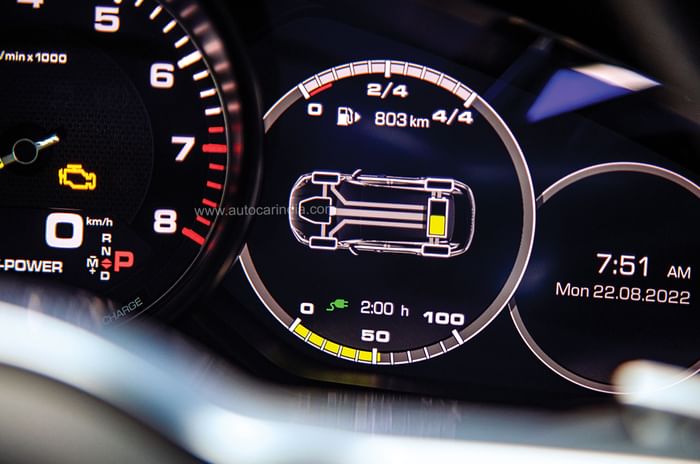
Up next, under some removable panels, sits a nest of plug points. Unlike a regular wall socket, the male part of the plug is fixed to the submarine and protected with a rubber casing. No, seriously. To charge the batteries on the submarine, you attach multiple plugs with high-tension leads coming from the shore. Don’t know how long it takes to charge the batteries, but I’m guessing the charging rate is high.
As I walk along, up next are stumps that have to be folded out. These help secure the boat to the dock. Don’t see a traditional anchor anywhere. Further ahead is the escape hatch for the submarine in case it gets stranded underwater and needs rescue. The rescue craft can affix itself onto the top of the hatch and take the sailors out.
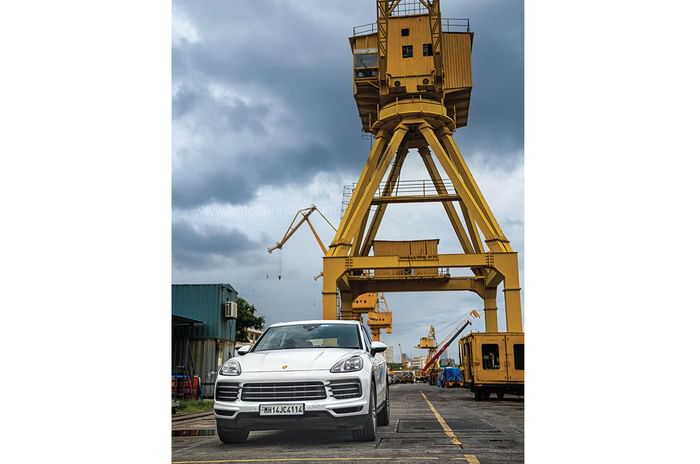
Just below the conning tower is the main hatch. Yes, this is where you enter and exit from, not the top of the conning tower as many believe. While the conning tower looks plain and featureless, there’s actually a lot going on here. For one, take the teardrop-like shape that helps it slip through the water.
Above the conning tower sit a whole host of periscopes. While some are for navigation, others are for attack and weapons release. There are also communication aerials and others that send out radar waves when the sub is just below the surface. The wide chimney-like unit is the snorkel that takes in air for the diesel, and it is used when the sub is running just below the surface.
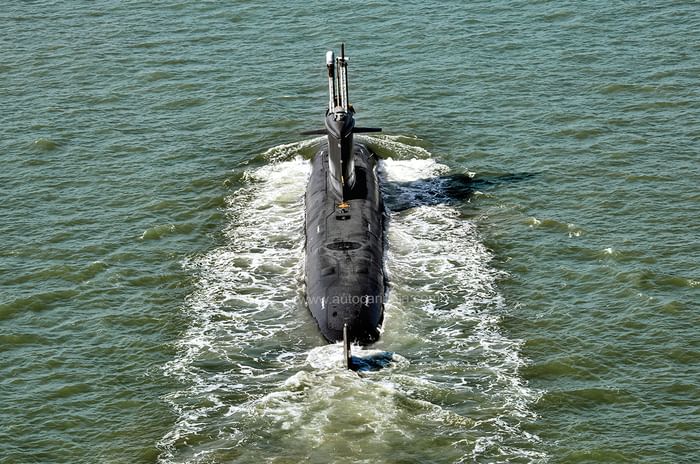
On either side of the conning tower are a pair of hydroplanes or control surfaces that help the sub dive or rise up. They work in tandem with similar ones on the tail. And the glass panels you see ahead of the conning tower aren’t windows but navigation lights.
The rounded nose of the submarine is also where the cylindrical sonar array, side firing sonar and the six torpedo tubes sit. Not only can the tubes fire massive wire-guided torpedoes, but two of the tubes can also be used to fire the SM-39 Exocet anti-shipping missile. The Exocet missile can take out a target that is several kilometres away.
Below deck
As fascinating as the Kalvari class is on the outside, the insides of the boat are even more of an eye-opener. Produced right here in Mumbai by the Mazagon Dockyard, to a design penned by the French Naval Group (formerly DCNS), Indian Kalvari class boats, however, differ significantly from French-produced Scorpène.

Our tour of the insides starts with a climb down into the submarine. As on all submarines, space is tight, and living quarters, even for the captain, are small. Still, these boats have showers and other luxuries not present on earlier Russian subs.
Just as we did topside, let’s start from the rear, where a prop-shaft sends power to the propeller or screw. The power going out to the back is converted from the battery’s DC to AC. To do this, more than 15 individual inverters are used, and these sit in a room just behind the propeller shaft. As we walk towards the centre of the submarine, we pass the huge and silent running electric motor – which is almost as large as the hull of the sub and measures between eight and ten feet in diameter. Up next, something very familiar, massive diesel engines, or, as they are called on this boat, diesel generators. And then we peer into the large battery pack, one of two on the boat.
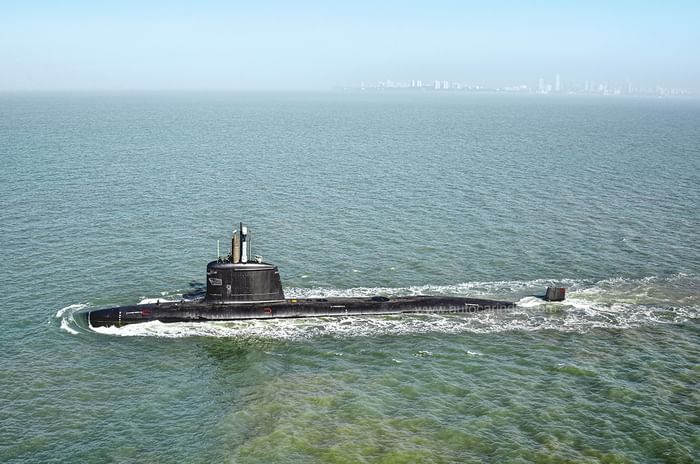
Then we enter the control room where there are rows of screens on each side and a large screen-based tactical table. Here, the captain gets a clear and live visual representation of the current scenario via feeds from cameras, sonars, radars and sensors; all fused into one. Right alongside is a choice of periscopes, and the captain has easy access to all of them.
One of the biggest challenges a sub faces underwater is navigation. Visibility even during the day is near zero, the submarine for the most part is blind as a bat, and then, once it drops below the surface, it is only electronics, sonar and satellites that can help. But can you imagine what it must have been like in the old days, being blindfolded and told to navigate in the inky depths with only a chart and a stopwatch in your hand? Yes, you have sonar, but once you put out a ‘ping’, everyone knows where you are, and then it’s game over. So subs generally use only passive sonar, where they just listen for sounds.
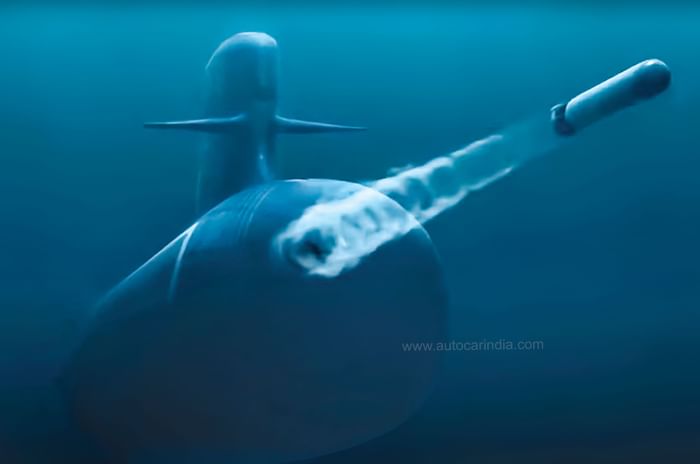
The other major challenge is buoyancy. To enable it to drive, the submarine has ballast tanks and trim tanks that are filled with water or air. When the submarine has to dive, the tanks are filled with water. To come up, compressed air is pumped back in.
Best of both worlds
The Kalvari class submarines are a much-needed shot in the arm for the Indian Navy. Technologically advanced, bristling with sensors and noise reduction tech and armed to the teeth, India’s new family of submarines also make the best use of both diesel and electric systems.

This is something the Porsche e-hybrid does as well. While plug-in hybrids aren’t very popular yet, due in part to the additional costs associated with running two full systems, they could be where we are headed, once costs come down.
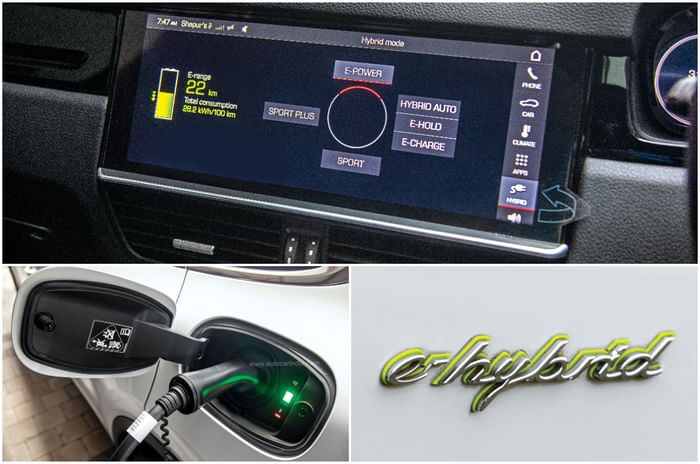
Cars are, however, still likely to lag behind subs technologically. Kalvari class submarines will soon be upgraded to use a fuel cell system. This will help give them greater endurance underwater. Designed, engineered and tested in India by the Defence Research and Development Organisation (DRDO), the fuel cell or AIP (Air Independent Propulsion) systems could give the Kalvari class submarines a crucial edge. How soon will cars catch up and start using fuel cell tech? That’s anybody’s guess.
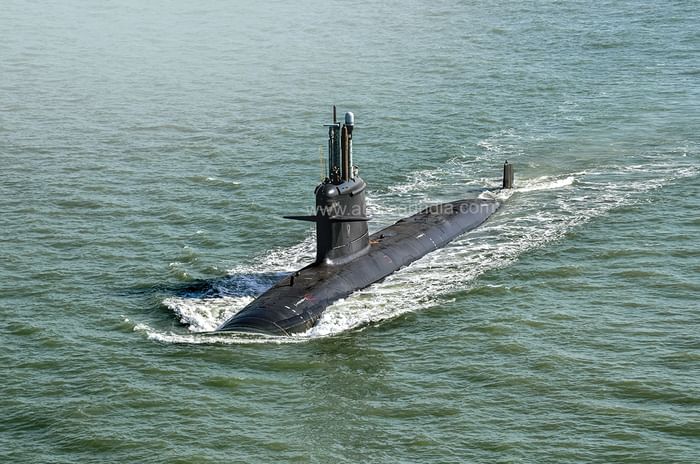
| Kalvari Class Submarine | |
|---|---|
| Price | Rs 4,000 crore (estimated) |
| Displacement, weight | 1,600 tonnes |
| Length | 67.5m |
| Beam | 6.2m |
| Height | 12.3m |
| Draught | 5.8m |
| Speed surfaced | 11kn (20kph) |
| Submerged | 20kn (37kph) |
| Porsche Cayenne e-hybrid | |
|---|---|
| Price | Rs 1.58 crore |
| Engine | 3.0-litre V6 |
| Power (combined max) | 455hp |
| Power e-motor | 134hp |
| Power engine | 335hp |
| Kerb weight | 2342kg |
| 0-100kph | 4.8sec |
| Height/ width/ length | 1.563/ 1.989/ 4.931m |
*specs and data taken from multiple sources





















